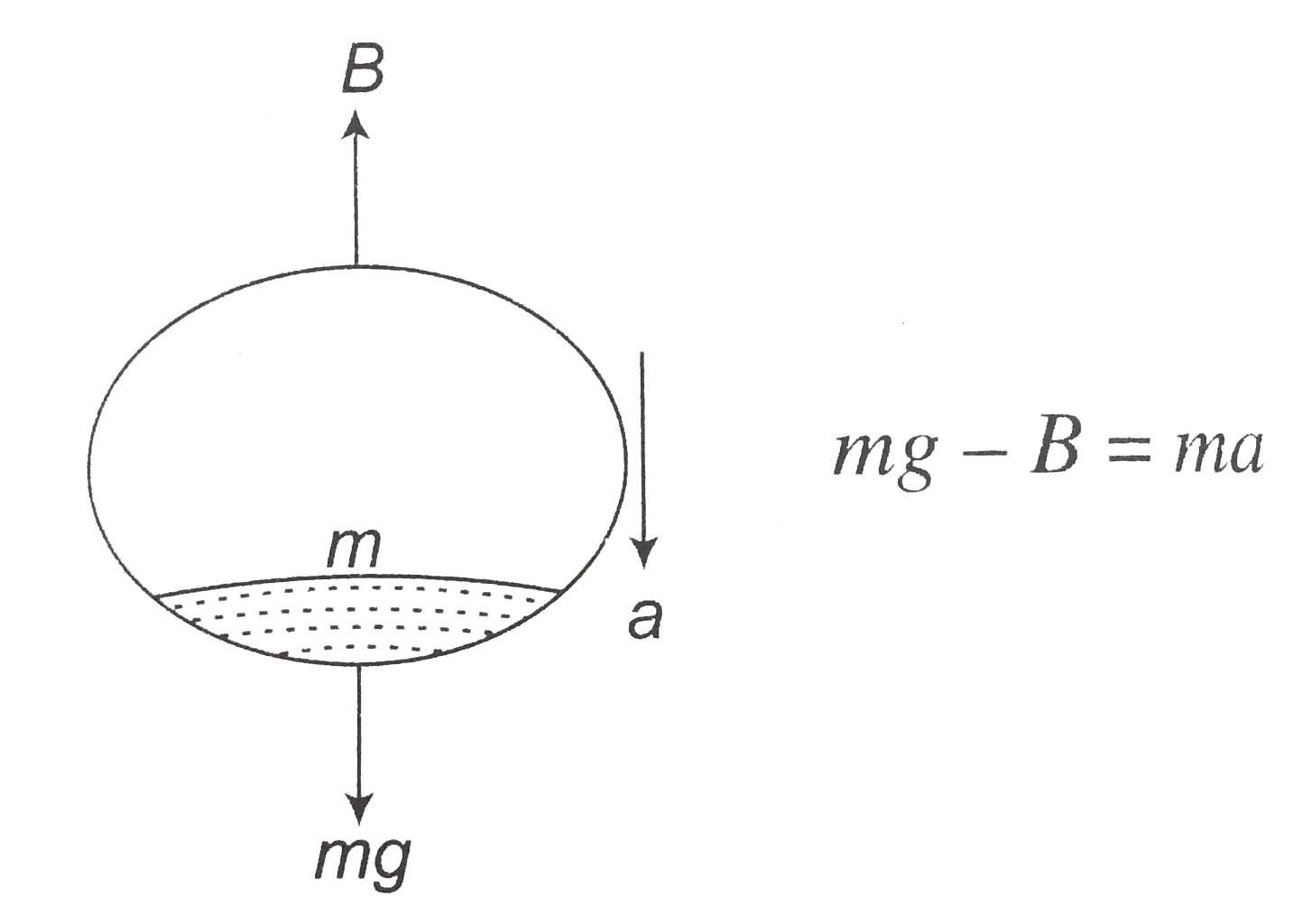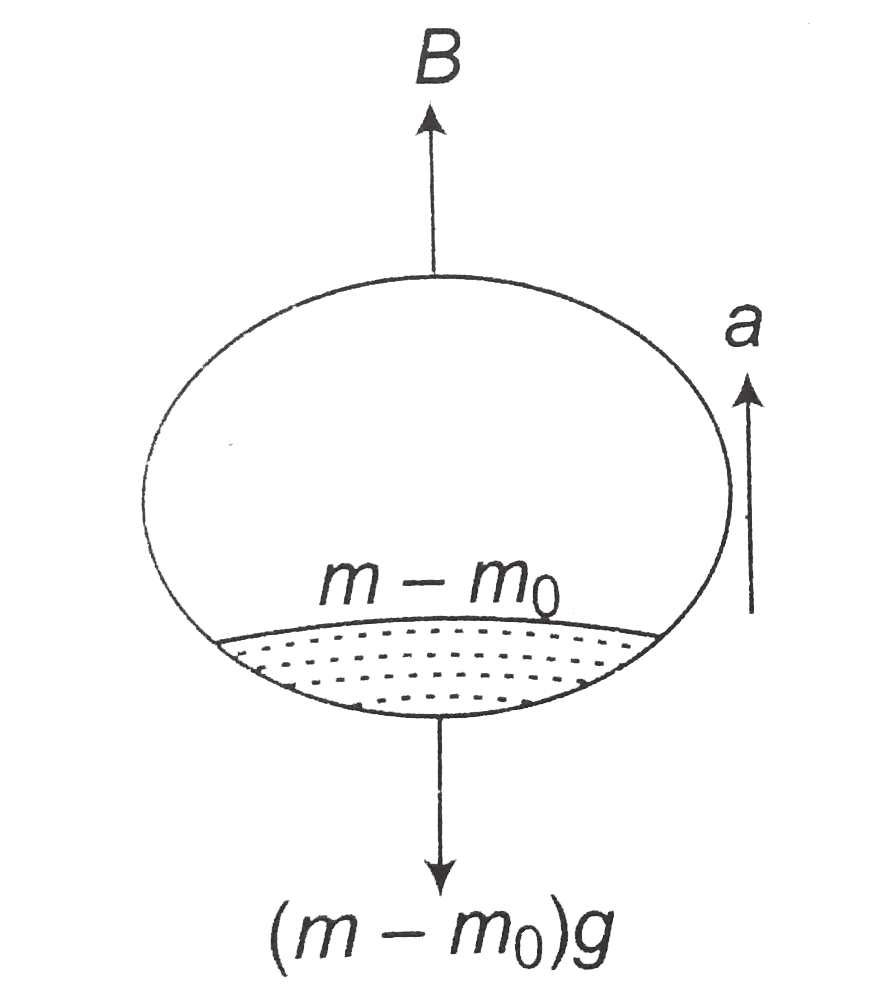A balloon with mass is descending down with an acceleration a . How much mass should be removed from it so that it starts moving up with an acceleration a?
The correct Answer is:D

Let the mass removed be

Adding (i) and (ii), we get
Topper's Solved these Questions
Similar Questions
A balloon with mass m is descending down with an acceleration a (wherea<g) . How much mass should be removed from it so that it starts moving up with an acceleration a?
View SolutionA balloon of mass m is descending down with an g/2 acceleration How much mass should be removed from it so that it starts moving up with same acceleration
View Solution
Knowledge Check
- Question 1 - Select One
A balloon with mass m is descending down with an acceleration a where a
A2mag+aB2mag−aCmag−aDmag−a - Question 2 - Select One or More
A balloon of mass m is rising up with an acceleration a.
AThe upthrust on the balloon is m(g+a).BThe upthrust on the balloon is ma.Cma/(2a+g) mass must be detached in order to double its acceleration.Dm/2 mass must be detached in order to double its acceleration. - Question 3 - Select One
A balloon of mass M and a fixed size starts coming down with an acceleration f(fltg). The ballast mass m to be dropped from the ballon to have it go up with an acceleration f. Assuming negligible air resistance is find the value of m
A(Mg+f)fBMf2(g+f)C(2Mfg+f)Dm(g+a)g
A balloon of mass m is descending down with an acceleration How much mass should be g2 removed from it so that it starts moving up with same acceleration?
View SolutionA balloon with mass m is descending down with an acceleration a (wherea<g) . How much mass should be removed from it so that it starts moving up with an acceleration a?
View SolutionA balloon carring some sand is moving down with a constant acceleration a0. How much mass of sand should be removed, so that the balloon move up with same acceleration?
View SolutionA balloon of mass M is descending at a constant acceleration α. When a mass m is released from the balloon it starts rising with the same acceleration α Assuming that its volume does not change what is the value of m. ?
View SolutionA balloon of mass M is descending at a constant acceleration α. When a mass m is released from the balloon it starts rising with the same acceleration α . Assuming that its volume does not change, what is the value of m?
View Solution
